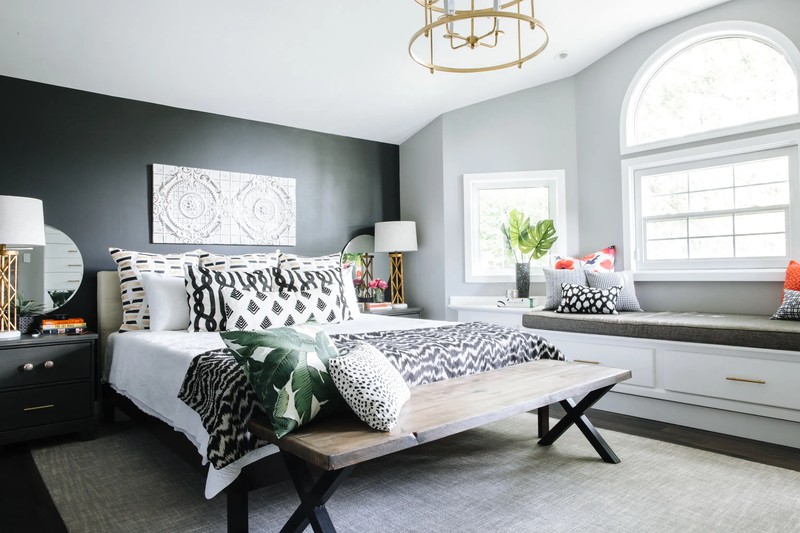
A Guide to Utilizing Fabrics in Interior Design
Fabric plays a central role in interior design, from bed and bath linens to upholstery and curtains. Nevertheless, not all fabrics are created equal. Different types of fabric are best suited for various roles within the design of a home. For instance, a fabric that is ideal for upholstery may not be suitable for curtain panels. Similarly, the fabric you select for your duvet cover will likely differ from the fabric you select for your table linens. Understanding the weave you’re working with adds an additional layer of complexity to the equation. Different weaves within a fabric family have different properties, so not all types of a particular fabric may be suitable for the same task. Selecting the best fabric for curtains or sofas begins with a thorough understanding of the available natural and synthetic fabrics, as well as the distinctions between their respective properties. Here, we are pleased to introduce a new series in which we will examine specific fabrics and designer recommendations for their application. But first, let’s examine a variety of fabric types and the characteristics for which they are best known.
As the term suggests, natural fabrics are those woven from natural fibers. For instance, they may be derived from cotton grown on a farm, wool sheared from a sheep, or silk produced by a worm. Natural fabrics can serve a variety of purposes in the home, as evidenced by the variety of sources for these materials. Natural fabrics are an ideal option for decorative elements in any room. Cotton FabricGeneral properties: Versatile and permeable Ideal for bedding, upholstery and slipcovers, as well as window treatments for informal settings. Since the 1980s, cotton’s slogan has been “the fabric of our lives,” which it merits due to its versatility. Cotton is typically a versatile, breathable fabric that accepts dye well. As a result, cotton and its many weaves are prominently featured in home decor. Cotton is a popular, ubiquitous fabric, but stains are notoriously difficult to remove from cotton weaves. Therefore, it is essential to have cotton fabrics professionally treated for stain resistance, particularly for furnishings in high-traffic areas. Cotton is a versatile fabric with a variety of textures and weaves that drape quite differently.
Certain cotton weaves are an excellent option for window treatments, but not all cotton is suitable for drapes. Cotton with a canvas or twill weave, for instance, can serve as a durable slipcover or upholstery material for family room furniture. Jacquard cotton is an ornate upholstery fabric that works well in formal spaces, such as an office or living room. A higher thread count is ideal for breathable, comfortable bedding. Its versatility makes it an ideal material for everything from luxury duvet sets for adults to glow-in-the-dark dinosaur sheets for your family’s aspiring paleontologist. Cotton works beautifully as informal curtains in the kitchen or guest bedroom of a summer home. Another significant advantage of cotton is its relative ease of maintenance. It is a machine-washable material, making it easy to clean when little paws or hands leave behind dirt. Regardless of your preferred design aesthetic, cotton can play a prominent role in your interior spaces. Cotton Blend FabricGeneral properties: Versatile, durable Best for: upholstery and heavily traveled areas Cotton blends combine the versatility and brilliance of cotton with increased longevity.
Cotton blends consist of cotton woven with natural linen fibers or synthetic fibers, such as polyester or rayon. Similar to 100% cotton, cotton blend fabrics are adaptable and can be used throughout the home. In high-traffic areas, cotton blends with a stain-resistant finish are an attractive upholstery option. Blends are well-equipped to withstand, for example, little feet on sofas or apple sauce dribbles on seat cushions. General characteristics of linen: lightweight and breathable Best for: low-traffic areas, pillowcases, curtains, and tablecloths Similar to cotton, linen fabrics are derived from plants. In the case of linen, flax plants are harvested for their fibers, which are then woven into a lightweight fabric. Linen retains color well and is even more breathable than cotton. In contrast to cotton, linen is not typically known for its durability. As an upholstery fabric, it is best suited for formal living rooms or other low-traffic areas. As anyone who has worn linen clothing can attest, linen also tends to wrinkle easily, so it is best suited for casual settings or vacation homes. Linen fabric is a creative way to add splashes of color to a room by way of vibrant or patterned throw pillows or lively table linens. Although some weaves of linen fabric are lightweight and delicate, this does not imply that all linen is lightweight and delicate. If you need inspiration for an aesthetic that utilizes fabric in interior design, check out the regency era. Read more about Bridgerton, a show taking place in the regency era, over at LordPing.co.uk.
Always be aware of the type of weave you’re working with, as some can be heavyweight and remarkably resilient. Similar to cotton, certain types of linen can be machine-washed, but looser weaves tend to shrink. The best method for caring for table linens and pillowcases is likely line drying. Try placing the item in the dryer at the very end of the cycle to de-wrinkle it without causing further damage. Silk FabricGeneral properties: Durable, plush, with a slight sheen Best for: decorative pillows and accents in rooms with limited solar exposure Silk fabric is frequently associated with opulence due to its velvety texture and slightly lustrous sheen. China began producing silk fabric around 4000 BCE. As it spread across the globe, it remained an aristocratic fabric that was worn and traded. Silk retains its reputation as an opulent fabric despite the fact that it is more accessible now. However, its reputation belies its resilience and adaptability. Silk is also available in a variety of weaves and types, similar to cotton and linen. In fact, the weave of silk determines a great deal of its durability.
A heavy raw silk is quite durable and can withstand considerable wear. In fact, many fine Oriental rugs are woven from silk or a silk-wool blend and are passed down through families’ generations. Silk is not a one-size-fits-all fabric, despite its reputation for being soft to the touch. Other weaves, such as silk taffeta, can be crunchier and more rigid. When working with silk, its susceptibility to sun damage is a concern. Excessive exposure to the sun’s rays can result in discoloration and even holes in the fabric. Therefore, it is not a suitable option for unlined window treatments or upholstery in rooms with maximum solar exposure that face south. Wool MaterialGeneral characteristics: Extremely durable, warm, and simple to spot-clean Carpeting, high-traffic areas, and warm bedding layers are where you should invest your money. Wool is one of the most long-lasting natural fibers. A fabric made from woven wool fibers is warm and virtually indestructible. Wool in its natural state is a durable carpeting option for high-traffic areas such as a foyer or den. During the cold winter months, wool throw blankets add color and warmth to living areas. When blended with other materials, wool produces a solid, spot-cleanable upholstery fabric. Additionally, wool blends are excellent for top-layer bedding, including duvet covers, quilts, and decorative pillows.
Synthetic Textiles Synthetic fabrics, in contrast to natural fabrics, are woven from fibers created through chemical synthesis. These laboratory-created fibers are flexible, long-lasting, and compatible with natural fabrics. Acrylic and polyester fabric are the two most common synthetic fabrics used in interior design, though there are many others. Acrylic Material General properties: Water-resistant, stain-resistant, and resilient Favorable for: outdoor living areas Acrylic is a durable material designed to resemble wool. Similar to natural fibers, it is durable, stain-resistant, and colorfast. The other notable characteristic of acrylic fabric is that it is hydrophobic, or resistant to water. Acrylic fabric is a natural choice for outdoor dining set upholstery, patio umbrellas, and chaise lounge throw pillows due to its water resistance and durability. However, as a design firm that specializes in creating family-friendly spaces, high-performance fabrics — also known as solution-dyed acrylic fabrics — are among the most effective tools in our designers’ arsenal. Solution-dyed acrylic fabric is dyed prior to the creation of the fabric’s yarn, producing a colorfast, water-resistant woven fabric without sacrificing softness or comfort. These high-performance fabrics are able to withstand years of wear from the youngest household members. As with natural fabrics, it is essential to understand the characteristics of the weave of the acrylic fabric you are working with. Depending on the weave, certain acrylic fabrics tend to pill, whereas the majority do not.
Polyester Material General characteristics: Durable, stain-resistant Best for: blended fabrics throughout the home and the majority of areas where cotton would be utilized (upholstery, slipcovers, casual window treatments) Polyester may be familiar to crafters as a material used to stuff pillows and as batting in homemade quilts. However, when polyester is incorporated into a household fabric, it is rarely used by itself. Popular in interior design are cotton/polyester blends. Consider using a cotton-polyester blend almost everywhere in your home where you would use cotton alone. Particularly for those with active children or pets at home, selecting a polyester blend can give you peace of mind that your fabric will be better able to withstand the test of time. Although polyester is an extremely versatile material, it is not recommended for use in bedding. Leave that to natural and breathable cotton and linen fabrics. Poly-linen blends are excellent options for window treatments and anything else requiring drapery where true linen fabric would be too easily wrinkled. Whether you seek durability, color, wrinkle-resistance, or an upscale appearance, there are suitable fabrics for the task. Understanding how different types of fabric withstand use and wear, as well as the characteristics of the weave you’re working with, is the first step in creating a durable space.


